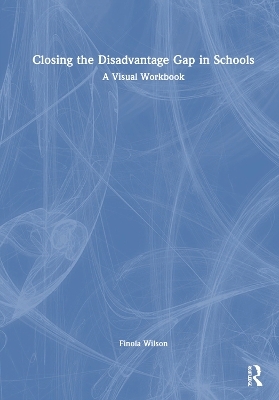
Closing the Disadvantage Gap in Schools
Routledge (Verlag)
978-1-032-82411-6 (ISBN)
- Noch nicht erschienen (ca. April 2025)
- Versandkostenfrei
- Auch auf Rechnung
- Artikel merken
Many children are leaving school without the learning that they need to navigate the adult world effectively, the majority of whom are among the most vulnerable in our society. Closing the Disadvantage Gap in Schools helps teachers and school leaders to understand what educational disadvantage is and what research tells us are the “best bets” for making sure this disadvantage doesn’t stop these children from succeeding in life.
Designed as a highly practical workbook with accompanying sketchnotes that bring research to life, it uses reflective questions, worked examples, self-assessment tools and guided practice tasks to help educators to support the most disadvantaged pupils in their school community to achieve.
The book helps staff to:
• Understand what causes the attainment gap and what it might look like in school.
• How to develop a positive school culture that values and supports every child.
• Use data to identify and track underperformance driven by disadvantage.
• Improve the quality of teaching and learning for the most vulnerable pupils.
• Provide targeted support and interventions for pupils who need extra help.
• Monitor and evaluate the impact of your actions and adapt accordingly.
Whether you are a headteacher, a middle leader, or a classroom teacher, this book will equip you with the knowledge and skills to make a lasting difference to the attainment outcomes of the most vulnerable pupils in your school.
Finola Wilson is the Director of Impact School Improvement Ltd., a trusted partner to a wide range of education organisations across the UK and beyond, which uses the latest research and evidence to create professional learning and bespoke consultancy with impact.
Acknowledgements
Foreword
Introduction
Chapter 1 – How to Use This Book
Chapter 2 – Creating a Culture of High Expectations
Chapter 3 – What is Educational Disadvantage?
Chapter 4 – Small Changes on a Large Scale
Chapter 5 – Identifying Disadvantage
Chapter 6 – How Disadvantage Presents Itself
Chapter 7 – Three Layers of Support
Chapter 8 – Using Professional Learning to Make a Difference
Chapter 9 – The Science of Learning
Chapter 10 – Desirable Difficulties to Address Disadvantage
Chapter 11 – The Importance of Language and Other ‘Best Bets’
Chapter 12 – Using Data to Guide Instruction
Chapter 13 – What Makes Things Worse?
Chapter 14 – Is It Working?
Index
| Erscheint lt. Verlag | 15.4.2025 |
|---|---|
| Zusatzinfo | 3 Tables, color; 23 Tables, black and white; 67 Line drawings, color; 1 Line drawings, black and white; 67 Illustrations, color; 1 Illustrations, black and white |
| Verlagsort | London |
| Sprache | englisch |
| Maße | 210 x 297 mm |
| Themenwelt | Sozialwissenschaften ► Pädagogik ► Sonder-, Heil- und Förderpädagogik |
| ISBN-10 | 1-032-82411-5 / 1032824115 |
| ISBN-13 | 978-1-032-82411-6 / 9781032824116 |
| Zustand | Neuware |
| Haben Sie eine Frage zum Produkt? |
aus dem Bereich


